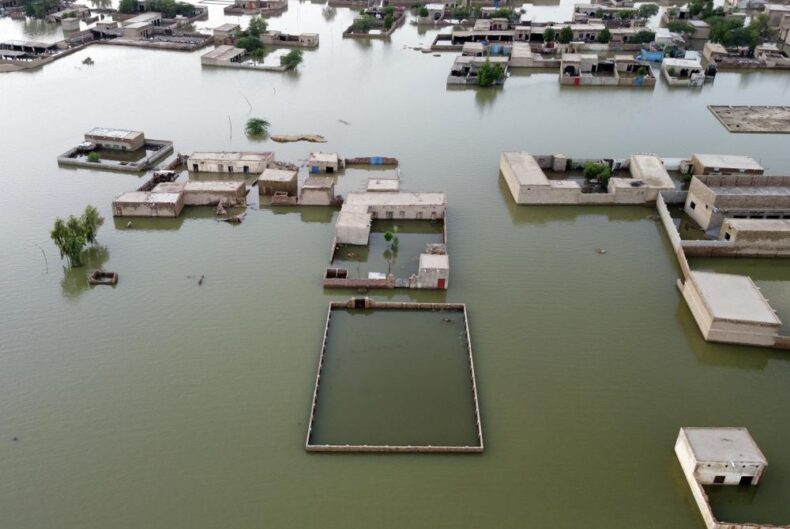Pakistan is witnessing unprecedented rainfall resulting in flash floods across the country. The latest satellite images released by European Space Agency reveal a third of Pakistan is underwater. The death toll resulting from the Pakistan floods has reached 1,186, including 399 children. According to reports, more rainfall is predicted to downpour, increasing the risk of more flooding.

Humanitarian aid is urging countries to donate to fight the devastating impact of floods in Pakistan. In response, several countries, including Uzbekistan, the United Kingdom, UAE, Qatar, South Korea, France, Iran, the EU, and China, along with international organisations, have pledged to assist Pakistan in battling the repercussions of unprecedented rainfalls.
China, UAE and others provide aid for relief from devastating Pakistan floods.
On Friday, Pakistan officials said the death toll surpassed 1200, and several children are at risk of waterborne diseases. To provide humanitarian assistance, fresh supplies are actively flying into Pakistan from the United Arab Emirates. In addition, the first flight from Uzbekistan landed last night in Islamabad.
Pakistan’s military rescue operations in Sindhu, Balochistan, and other extensively affected areas have reached 3 million people. International organisations and several officials blame climate change for the havoc-wreaking adversities.

On Friday, Pakistan’s Foreign Ministry issued a statement stating planes have brought food items, tents, and medicines. In addition, Shahbaz Sharif, Pakistan’s Prime Minister, has postponed his travel to UAE, scheduled for Saturday. Instead, he will be visiting the flood-hit areas to access the situation.
According to officials, an estimate of damages worth $10 billion is caused by Pakistan floods. Furthermore, due to the floods, bridges have collapsed, thousands of houses have washed away, thousands of livestock are dead, and many roads have vanished. Experts say Pakistan is witnessing a 400% increase in average rainfall, specifically in Balochistan and Sindh regions.
Due to torrential rains, the Indus River is overflowing.
Satellite images illustrate the overflowing Inus River that has turned Sindh province into a massive lake. According to reports, the lake is a hundred kilometres wide. Furthermore, Pakistan floods have wreaked havoc on Pakistan’s infrastructure, damaging roads and crumbling bridges.













